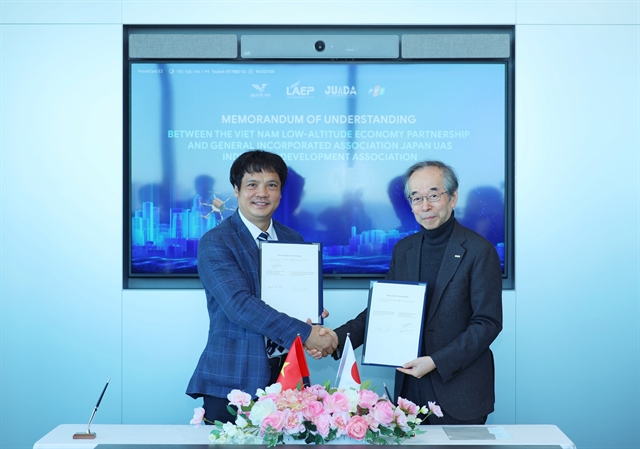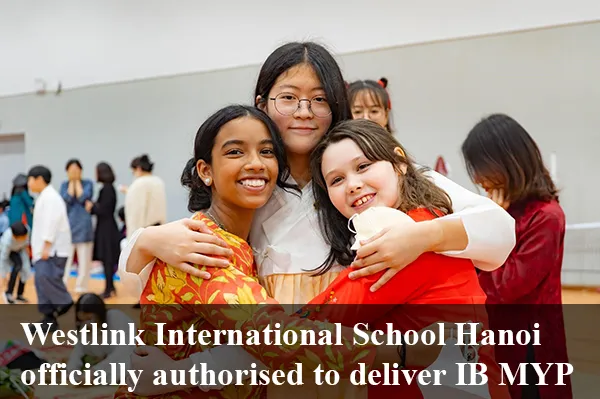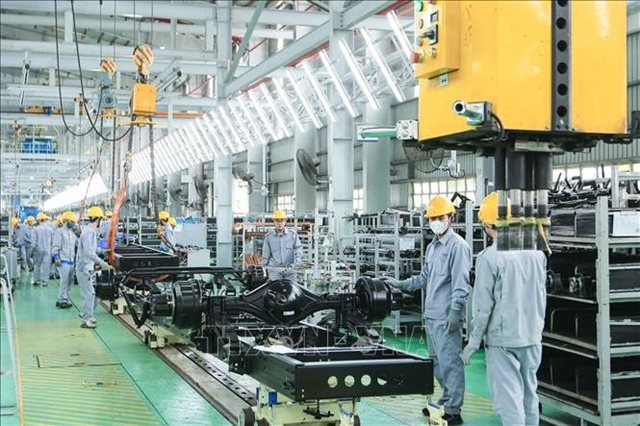 Economy
Economy
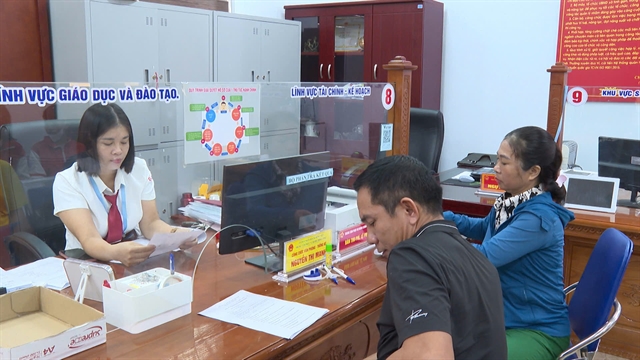
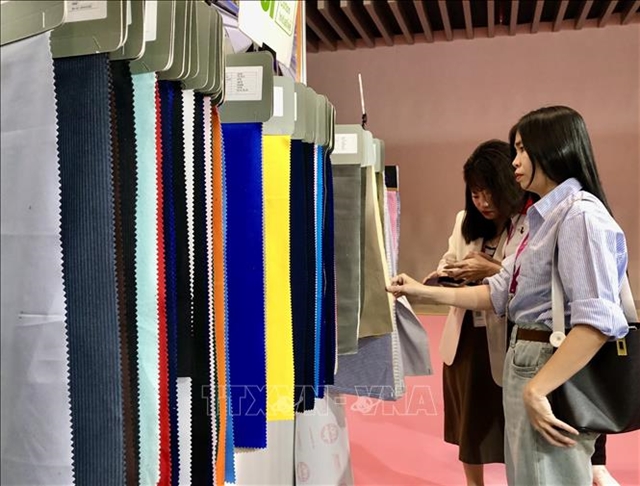 |
| Visitors explore textile and garment materials at the Vietnam International Trade Fair for Apparel, Textiles, and Textile Technologies (VIATT 2025). — VNA/VNS Photo |
HÀ NỘI — Việt Nam’s textile and garment industry must strengthen automation and prioritise domestic sourcing of raw materials if it is to maintain export momentum and remain globally competitive, according to industry leaders.
The Chairman of the Vietnam National Textile and Garment Group (Vinatex), Lê Tiến Trường, said boosting automation and transitioning to synthetic fibre production were key strategies. Among synthetic materials, polyester staple fibre (PSF) plays an increasingly vital role, particularly in the production of CVC and PE yarns.
Previously, demand for synthetic yarns such as PSF stood at just 100,000 tonnes per year. This year, it is expected to climb to 550,000 tonnes. In response, many spinning enterprises have converted their production lines from 100 per cent cotton to CVC and PE yarns. Trường noted that PSF is now a core requirement for Vinatex’s yarn manufacturers.
New tariff regulations also require synthetic yarn products to prove their origin. Facing stricter rules regarding the origin of textile materials under free trade agreements, Vinatex proposed that businesses assess and categorise fabric types currently available domestically to reduce reliance on imported inputs.
Companies are being encouraged to work closely with customers to diversify sources of imported raw materials. At the same time, they are urged to accelerate the use of digital technologies, especially for traceability, to ensure transparency in their supply chains and compliance with international standards.
Trương Văn Cẩm, Vice Chairman and General Secretary of the Vietnam Textile and Apparel Association (VITAS), said the sector had an urgent need to increase self-sufficiency in raw materials to secure stable supplies and reduce vulnerability to disruptions in a few key markets.
He emphasised that businesses should focus on diversifying not only their markets and product offerings, but also their raw material supply chains. He added that more investment should be directed towards the fibre segment, particularly from both foreign and domestic investors, and especially in industrial zones that meet environmental standards.
Cẩm stated that developing domestic raw materials would enable textile producers to control supply and meet rules of origin under free trade agreements, allowing them to take full advantage of preferential tariffs.
To address shortfalls in raw materials, the Vietnam National Industry - Energy Group (Petrovietnam) recently resumed full operations at the Đình Vũ Polyester Fibre Plant. The factory is now focused on manufacturing PSF and recycled fibres. This restart aims to maximise the plant’s existing capacity, make effective use of past investments, and raise the localisation rate of raw materials for the domestic textile sector.
The industry has shown signs of recovery, with export turnover reaching over US$26.33 billion in the first seven months of 2025 — an increase of $5.3 billion or nine per cent year-on-year. However, to reach the year-end target of $47–48 billion, Việt Nam must maintain monthly export revenues above US$4 billion for the remainder of the year.
This is a challenging objective, particularly given that tariffs on Vietnamese garments in the US market remain at 20 per cent — a disadvantage compared to competitors benefiting from more favourable trade terms.
Businesses expect fluctuations in global demand in the final months of the year. Ensuring a stable workforce and upgrading equipment will be essential to meet the technical requirements of new orders.
VITAS Chairman Vũ Đức Giang said exporters should focus on both retaining traditional markets and expanding into new ones.
Giang noted that each enterprise must work to strengthen supply chain linkages, particularly in light of lessons from international tariffs and the European Union’s focus on recycled and eco-friendly products. He called on the industry to proactively adapt and reinforce connections throughout the supply chain. — VNS

